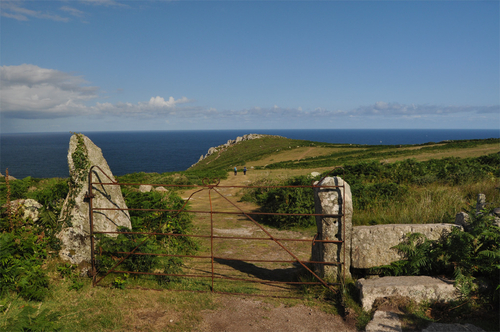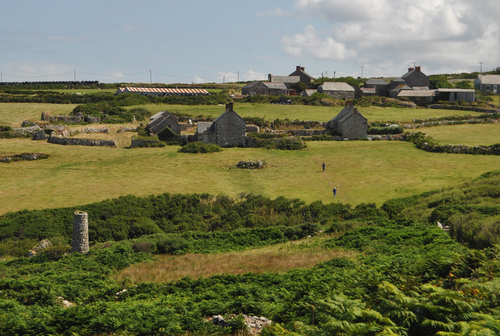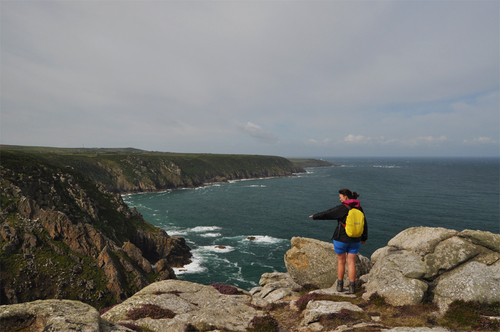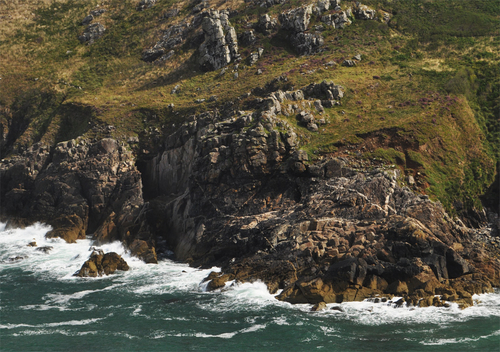We've added two new walks in the far northwestern corner of Cornwall, past St Ives and beyond the reach of Victorian "civilisation". These were some of the last Cornish-speaking areas, and the Celtic culture is less diluted here than in many other parts of Cornwall.
West of St Ives, the huge lump of what is termed "Lands End Granite" creates a moorland landscape that resembles Dartmoor if you look inland, but for around a mile from the coast is a flat "bench" dotted with farms. The bench was formed when sea levels were higher and West Penwith was an island, cut off from the mainland by a gulf located around Hayle and St Erth. The wave action cut a platform into the granite, and when the climate cooled and sea levels dropped, the bench and the Hayle Valley were unveiled.
The land here has been farmed since the Bronze Age and the ancient Celtic field systems are still intact. Most fields are square rather than rectangular as this meant it wasn't too far to carry pieces of granite by hand that were scattered in the fields to the edges make the walls. Many of the farms here have signed up to the Environmental Stewardship Scheme which provides some funding in return for environmental work and protection of the heritage, allowing traditional farming practices to continue.
Unsurprisingly, the relatively flat land is crossed by an ancient route, which is sometimes known as the Zennor Churchway and was originally marked by a number of wayside crosses. This runs from St Ives all the way to Pendeen, and probably continued to St Just, although the extensive mining in the St Just area has wiped out most traces of it there. The walks both follow the Coast Path along the rugged coastline and then return via the Churchway.
On both walks, the Lands End Granite didn't reach the coast all the way along the route, so the original rocks, transformed by the heat from the molten magma cooling to form granite, form some of the coastline such as at Zennor Head and Gurnard's Head. On both walks, there are areas of coastline where the edge of the granite mass is exposed and the molten rock was forced through cracks in the surrounding rocks to create sheets of granite visible as stripes through the rocks, and lava-lamp-like blobs at Porthmeor Cove.
There are also a few other circular walks in the Penwith area on the iwalknorthcornwall website.



